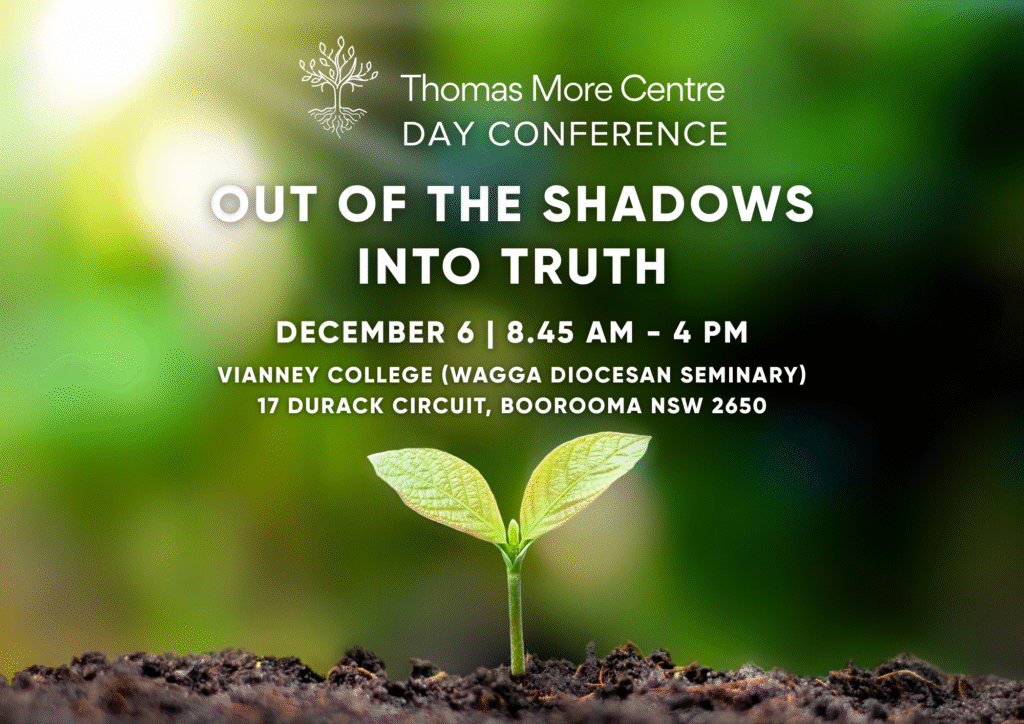One of most striking points that Australian author and journalist Greg Sheridan makes in his recent book How Christians Can Succeed Today: Reclaiming the Genius of the Early Church (Allen & Unwin, 2025), which we featured in last week’s newsletter and discussed with him in recent weeks, is that the early Christians spearheaded the first revolution of the family and a great “sexual revolution” that changed the lives of women, children, babies and the elderly for the far better.
St Paul and others took note of the way Jesus Christ brought together the respect that the Jewish tradition enshrined for the faithful family in its moral teaching and liturgical prayer, and added a close personal concern for women who were outcast or oppressed either socially or spiritually (or both).
The early Christian women who chose to serve Christ as consecrated widows or virgins gained a type of standing that was unknown for all but the very wealthy women in the ancient pagan world – in a sense, the early Christians proved that personal morality and intellectual commitment did shape the political.
Greg Sheridan writes in his book: “So, following the teachings of Jesus, Paul and the early Christians are determined to transform the nature of marriage. In making marriage a reciprocal, voluntary, lifelong commitment of love, service and mutual care, the early Christians are charting a new vision of marriage.”
It is not only good for women and children, Sheridan says, but the Christian insight about emotionally disciplined and sexually virtuous men is also good for them, for family stability and happiness and of course for the rest of society.
Here, writes Sheridan, religious truth meets sound sociology.
It is not, writes Sheridan in his recent book, about political power but about the power of love and devotion.
“It’s another striking feature of the history of the early church that it was disproportionately made up of women … at a time when women were discounted and thought inferior in every way.”
One particular scholar to whom Sheridan refers in his book is one whose own intellectual journey is worth highlighting – Peter Brown.
Peter Robert Lamont Brown is 90 this year and was born in Dublin in 1935 into a Protestant family. Today Brown is Princeton University’s Philip and Beulah Rollins Professor of History, Emeritus. His CV is staggering.
Initially, Brown, who studied under such figures as C.S. Lewis, was more interested in the “inner heart” of history over and above a reductionist study of dates and rulers. Over the decades Brown has carved out an entirely new pathway in the study of the period of late Antiquity (roughly the period of 250-800 AD).
As one reviewer has written: “Over three-quarters of a century, Brown has profoundly influenced the historiography of ancient and medieval Christianity, most notably through his ability to creatively reframe the first thousand years of Christianity, a feat which he has done not just once, but repeatedly.”
His achievements and abilities are extraordinary. Brown is familiar with 26 languages and has received over 20 honorary doctorates.
He has written over one dozen books, all of them significant, beginning with his sociological and existential study of St Augustine, Augustine of Hippo (1967, 2000) and tracking his increasing interest in the study of the transformative role of Christianity in the Late Roman and pagan world.
Sheridan cites two other important Peter Brown books in the bibliography for his recent book. One particularly important work is Brown’s The Body and Society (1988), an extremely valuable contribution to the history of the Church’s “theology of the body”.
Brown’s works provide a lens through which the position of the family in Christian faith is both enshrined and challenged. Christian families are more expansive communities that transcend the often biological and functional views of marriage and family assumed in pagan family structure and children.
He finds that women may choose to serve the poor, consecrated to the task out of love for Christ freed from societal and family demands and expectations. In his book Through the Eye of a Needle (2012), Brown reveals how wealthy Christian families dispersed their funds to contribute to the building of churches and other centres of Christian life such as monasteries, centres of learning and hostels for the poor.
As the Roman Empire collapsed, these institutions became what Brown calls a shelter for new forms of life “a coral reef of institutions devoted to intercession”.
Brown’s writing has prompted historians in more recent years to look at the supernatural as it inspires the moral and the social. In recent years, Brown has had the opportunity to explore his own intellectual and spiritual journey, and this is fascinating.
Anna Krohn
Executive Director
Thomas More Centre
SAVE THE DATE: Catholic Social Teaching in Wagga – December 6 – TMC Day Conference
ABOUT: The Thomas More Centre is hosting a day conference dedicated to themes in Catholic Social Teaching. The program includes some inspiring speakers and timely topics for adults and younger people.
GOAL: To provide an affordable and encouraging program that assists people to navigate the problems of our times with a balanced, lively and realistic hope.
Two parallel streams will be offered: General Adults and Youth Stream (14+)
WHEN: December 6, 8.45am – 4pm
WHERE: Vianney College (Wagga Diocesan Seminary), 17 Durack Circuit, Boorooma NSW 2650
CONTACT: Email – admin@tmc.org.au
TryBooking link coming soon.








